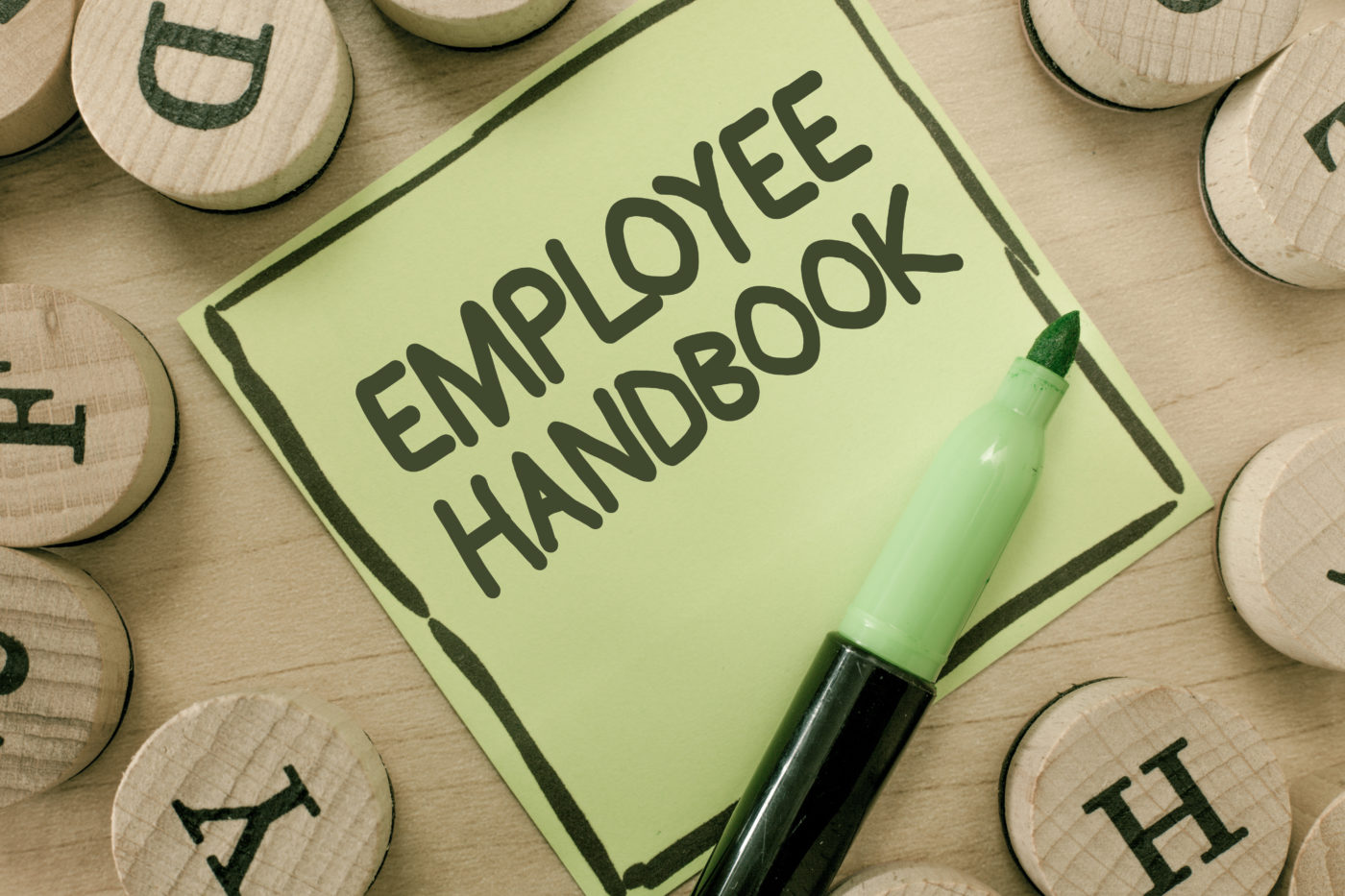Updating the Employee Handbook

I had a little accident recently and dislocated my shoulder. Sadly, my story isn't as exciting or daring as Andy's bike wreck, so I am just going to chalk it up to clumsiness and leave it at that. That being said, I am working on things around the office that I can do with one hand kinda tied behind my back. We thought his would be a good time to review and update the employee handbook.
Our handbook, has been managed by so many people over the years that you can almost tell who wrote each policy. Some policies are complex and confusing, while others are simple and vague - which can also cause confusion. The key to a good handbook is consistency and my vote goes to brevity.
I don't think I want employees that I have to spell out exactly what they can and cannot wear. I want employees smart enough to know what is appropriate and not appropriate to wear when we say our office is business casual. Our current dress code has lists such as: no coats with hoods, no sweaters with hoods, and no sweatshirts with hoods and no hoodies. I'm trying to figure out the issue with hoods and who, over the years, had it.
Having an employee handbook is really important for a business. It's really meant to be a living tool to communicate consistently to all of your employees. I am using the Handbook Builder through ThinkHR that we give to our clients. It's really easy, but you do need to ask yourself upfront, "What is our policy on this, or that?" It's a good exercise, but it's impossible to think of everything that could possibly come up in the future. When this handbook was originally written way back in the day and typed up on a typewriter, I know they couldn't have imagined needing the Mobile Device Policy we just wrote.
Using the handbook builder gives you a list of what's required, what's nice to have, and what may or may not apply to your business. As I read through our last version, I am doing so with this advice from ThinkHR in mind: "Every word of an employee handbook should be read carefully to see if it can be interpreted to mean something different from what the organization intended it to mean. In other words, the handbook should 'say what it means and mean what it says.' Furthermore, any promises or guarantees in a handbook or policy manual should be removed unless an employer is prepared to carry them out."
I will share my handbook experience over the next few weeks as my wing heals and I take a deeper dive into KIG policies. In the meantime, if you need a handbook, or have questions about your current one or the ThinkHR Handbook builder, let me know. I am happy to share what I know!


Share Your Thoughts